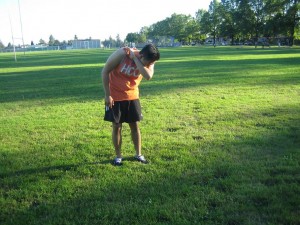The human tongue is a muscular organ that helps in the chewing, swallowing and talking. It has no protective skin and the color of the tongue will depend on its tissue and the blood that flows through it, and the normal color of the tongue is pink-red shade. The whitish coating that can be seen on the top of the tongue will vary from person to person and in different times of the day and can be caused by small particles of food that is trapped within the protrusions on the tongue which is called the papillae which provides the tongue a rough surface. The tongue is composed of three parts, namely the apex which is found at the tip of the tongue, the body which is the visible part of the tongue that extends until the back of the throat and the root which connects the tongue to the base of the mouth.
In some people, their tongue have brown to black discoloration which happens in patches or streaks and usually present from birth and not a serious problem, as long as it does not become enlarged over time or accompanied by other symptoms. The blackish discoloration is usually permanent and cannot be removed.
The health of the individual is analyzed by the appearance of the tongue. A healthy person has pink, moist and soft tongue with a thin film of saliva.
Common causes

- Poor oral hygiene. Not cleaning and brushing the tongue every day will lead to the development of thick white or yellowish coating that builds up on the surface of the tongue. Bacteria that are present in the mouth will react with trapped food particles found in the papillae which will cause the thick white coating.
- A tongue that is pale can be a sign of anemia caused by deficiency in iron or vitamin B12 deficiency. The surface of the tongue looks smooth and shiny.
- Tongue discoloration can be caused by oral thrush which is a thick saliva found on the surface of the tongue. This condition is common in infants and children and usually caused by yeast infection in the mouth.
- Leukoplakia, white or grey patches on the tongue caused by excessive use of tobacco chewing.
- Lack of oxygen supply in the heart and lungs causes the tongue to turn blue.
- Among those with typhoid fever, the tongue can be coated in white or yellow while the tip of the tongue becomes fiery red in appearance.
Treatment
- Clean the tongue every day using a tongue scraper in order to scrape off dead cells which provide a changed color to the tongue.
- Eat nutritious foods packed with vitamins and minerals.
- Minimize eating spicy or too hot foods.
- Drink plenty of liquids throughout the day in order to keep the tongue hydrated and moist.
- Avoid smoking, chewing of tobacco, excessive drinking of coffee and tea as well as carbonated beverages.
- Use a salt water mouth wash since it helps in minimizing the growth of bacteria which causes discoloration in the tongue
- Take the prescribed antibiotic medication to help lessen the pain and risk for future infections.
